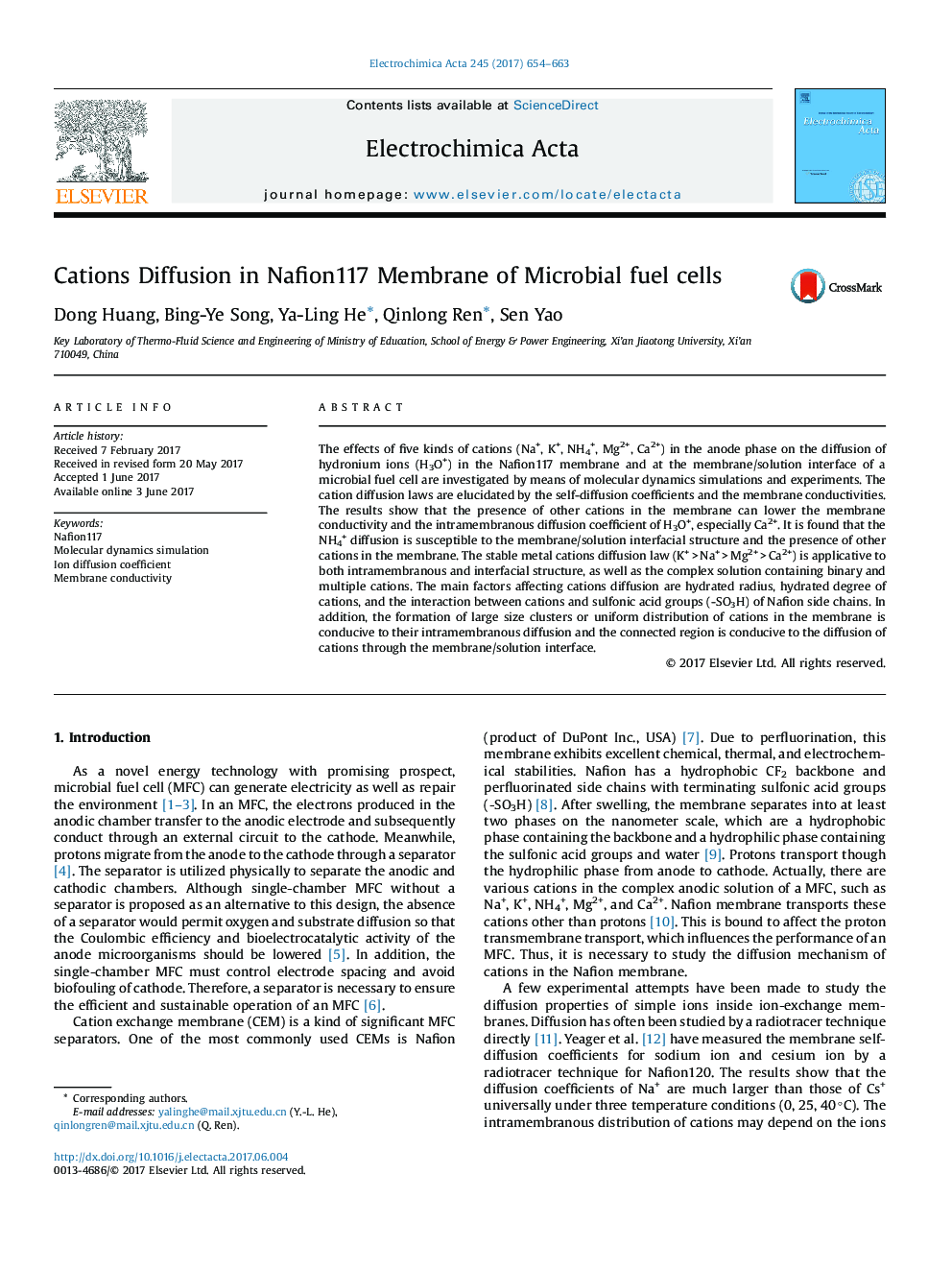| Article ID | Journal | Published Year | Pages | File Type |
|---|---|---|---|---|
| 6470837 | Electrochimica Acta | 2017 | 10 Pages |
â¢The presence of foreign cations can lower the membrane conductivity.â¢The metal cation diffusion law is applicative to the membrane and interface.â¢The interaction with sulfonic acid groups affects cations diffusion seriously.
The effects of five kinds of cations (Na+, K+, NH4+, Mg2+, Ca2+) in the anode phase on the diffusion of hydronium ions (H3O+) in the Nafion117 membrane and at the membrane/solution interface of a microbial fuel cell are investigated by means of molecular dynamics simulations and experiments. The cation diffusion laws are elucidated by the self-diffusion coefficients and the membrane conductivities. The results show that the presence of other cations in the membrane can lower the membrane conductivity and the intramembranous diffusion coefficient of H3O+, especially Ca2+. It is found that the NH4+ diffusion is susceptible to the membrane/solution interfacial structure and the presence of other cations in the membrane. The stable metal cations diffusion law (K+Â >Â Na+Â >Â Mg2+Â >Â Ca2+) is applicative to both intramembranous and interfacial structure, as well as the complex solution containing binary and multiple cations. The main factors affecting cations diffusion are hydrated radius, hydrated degree of cations, and the interaction between cations and sulfonic acid groups (-SO3H) of Nafion side chains. In addition, the formation of large size clusters or uniform distribution of cations in the membrane is conducive to their intramembranous diffusion and the connected region is conducive to the diffusion of cations through the membrane/solution interface.
